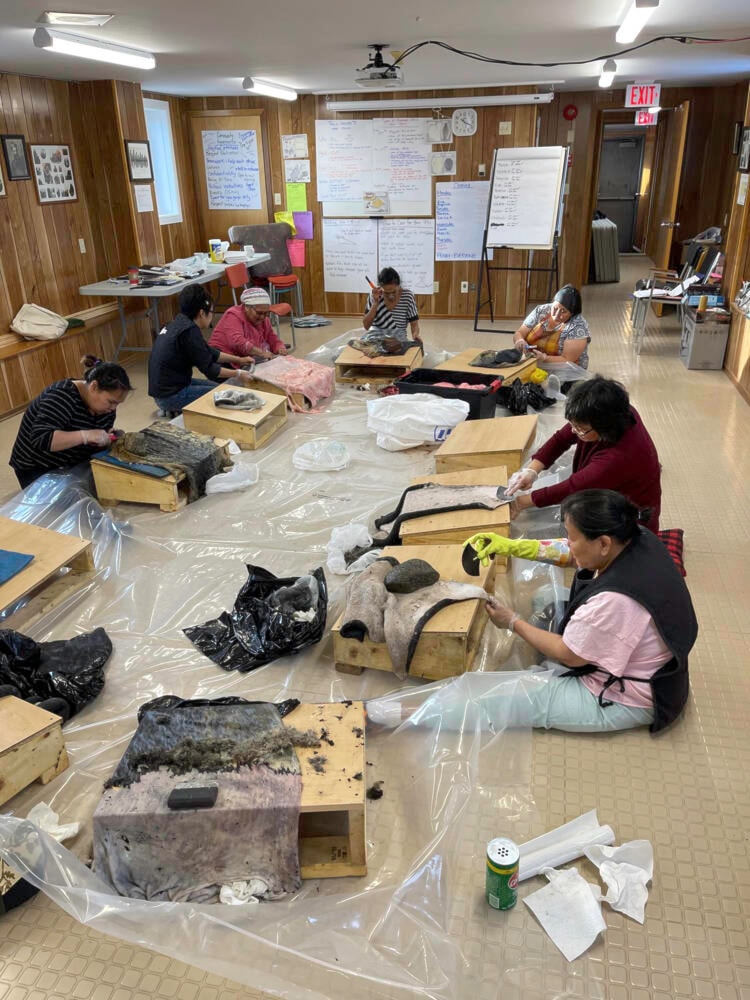Finding funding for a kamik-making program in Arviat took two years, but after the participants went home with their traditionally made footwear in early winter, all that work paid off.
“This program was suggested by an Elder, Hattie Alagalak from Arviat,” said Hilary Irwin, one of the co-ordinators of Ilitaqsiniq’s Qitsiriniq and Kammiurniq program. “She wanted to make sure kamik-making is passed down to younger generations, before the Inuit tradition of kamik-making is lost.”
Ilitaqsiniq finally found the resources to host a pilot run of the program, thanks to the Kivalliq Inuit Association (KIA).
Ten participants, two co-ordinators and four Elders joined forces for five weeks of full-time training to teach and learn how to create kamiks from scratch, starting with just a raw sealskin hide.
Participants had to do everything that was traditionally required: skinning the sealskins, taking the fat off, dehairing, sewing and more.
“Sometimes there were tears, sometimes there were many cigarette breaks,” said Irwin. “There were many different struggles. Each person was different. I’ve made kamiks with skins that were already prepared, but these ladies, they did it right from scratch — how they used to do it traditionally in the iglus. It’s a big process.”
The two toughest parts, she said, were cleaning the bearded sealskin properly so there were no uneven patches of hair, and then sewing the soles to the kamiks. The stitches had to be perfect to ensure the kamiks were waterproof.
But the effort was all worth it in the end.
“They were very excited, proud of themselves,” said Irwin. “There were a lot of tears at the end of excitement, joy and happiness that they were able to participate in such a program.”
Along with the kamik-making, the program also incorporated literacy activities, further bolstering participants’ cultural roots.
Ilitaqsiniq hopes to hold the program in other communities in the future.
“It’s very important that these types of programs continue to be run so that this tradition is not lost,” said Irwin, who thanked KIA for the funding necessary to make it a reality.
